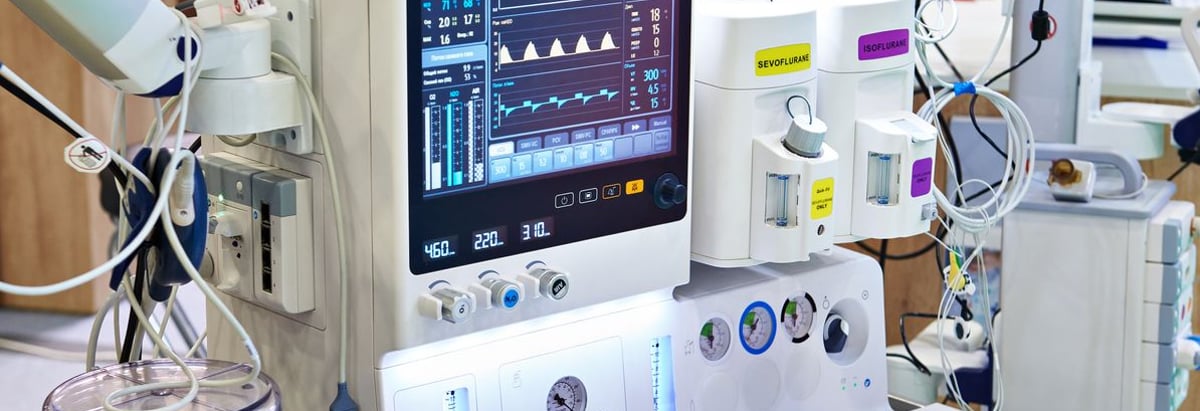- Belgium
- /
- Medical Equipment
- /
- ENXTBR:SEQUA
Health Check: How Prudently Does Sequana Medical (EBR:SEQUA) Use Debt?

David Iben put it well when he said, 'Volatility is not a risk we care about. What we care about is avoiding the permanent loss of capital.' It's only natural to consider a company's balance sheet when you examine how risky it is, since debt is often involved when a business collapses. We can see that Sequana Medical NV (EBR:SEQUA) does use debt in its business. But is this debt a concern to shareholders?
When Is Debt A Problem?
Debt and other liabilities become risky for a business when it cannot easily fulfill those obligations, either with free cash flow or by raising capital at an attractive price. Ultimately, if the company can't fulfill its legal obligations to repay debt, shareholders could walk away with nothing. However, a more common (but still painful) scenario is that it has to raise new equity capital at a low price, thus permanently diluting shareholders. By replacing dilution, though, debt can be an extremely good tool for businesses that need capital to invest in growth at high rates of return. When we examine debt levels, we first consider both cash and debt levels, together.
See our latest analysis for Sequana Medical
What Is Sequana Medical's Debt?
You can click the graphic below for the historical numbers, but it shows that as of December 2020 Sequana Medical had €7.47m of debt, an increase on €2.72m, over one year. However, it does have €11.0m in cash offsetting this, leading to net cash of €3.54m.

A Look At Sequana Medical's Liabilities
According to the last reported balance sheet, Sequana Medical had liabilities of €5.97m due within 12 months, and liabilities of €8.13m due beyond 12 months. On the other hand, it had cash of €11.0m and €954.0k worth of receivables due within a year. So its liabilities outweigh the sum of its cash and (near-term) receivables by €2.13m.
This state of affairs indicates that Sequana Medical's balance sheet looks quite solid, as its total liabilities are just about equal to its liquid assets. So while it's hard to imagine that the €154.9m company is struggling for cash, we still think it's worth monitoring its balance sheet. While it does have liabilities worth noting, Sequana Medical also has more cash than debt, so we're pretty confident it can manage its debt safely. When analysing debt levels, the balance sheet is the obvious place to start. But ultimately the future profitability of the business will decide if Sequana Medical can strengthen its balance sheet over time. So if you want to see what the professionals think, you might find this free report on analyst profit forecasts to be interesting.
In the last year Sequana Medical's revenue was pretty flat, and it made a negative EBIT. While that's not too bad, we'd prefer see growth.
So How Risky Is Sequana Medical?
Statistically speaking companies that lose money are riskier than those that make money. And in the last year Sequana Medical had an earnings before interest and tax (EBIT) loss, truth be told. Indeed, in that time it burnt through €17m of cash and made a loss of €19m. Given it only has net cash of €3.54m, the company may need to raise more capital if it doesn't reach break-even soon. Summing up, we're a little skeptical of this one, as it seems fairly risky in the absence of free cashflow. There's no doubt that we learn most about debt from the balance sheet. But ultimately, every company can contain risks that exist outside of the balance sheet. Case in point: We've spotted 5 warning signs for Sequana Medical you should be aware of, and 2 of them are a bit concerning.
When all is said and done, sometimes its easier to focus on companies that don't even need debt. Readers can access a list of growth stocks with zero net debt 100% free, right now.
If you decide to trade Sequana Medical, use the lowest-cost* platform that is rated #1 Overall by Barron’s, Interactive Brokers. Trade stocks, options, futures, forex, bonds and funds on 135 markets, all from a single integrated account. Promoted
New: Manage All Your Stock Portfolios in One Place
We've created the ultimate portfolio companion for stock investors, and it's free.
• Connect an unlimited number of Portfolios and see your total in one currency
• Be alerted to new Warning Signs or Risks via email or mobile
• Track the Fair Value of your stocks
This article by Simply Wall St is general in nature. It does not constitute a recommendation to buy or sell any stock, and does not take account of your objectives, or your financial situation. We aim to bring you long-term focused analysis driven by fundamental data. Note that our analysis may not factor in the latest price-sensitive company announcements or qualitative material. Simply Wall St has no position in any stocks mentioned.
*Interactive Brokers Rated Lowest Cost Broker by StockBrokers.com Annual Online Review 2020
Have feedback on this article? Concerned about the content? Get in touch with us directly. Alternatively, email editorial-team (at) simplywallst.com.
About ENXTBR:SEQUA
Sequana Medical
Develops and commercializes treatments for patients with diuretic-resistant fluid overload in liver disease, cancer, and heart failure in Belgium, Germany, France, and internationally.
Medium-low with limited growth.
Market Insights
Community Narratives





